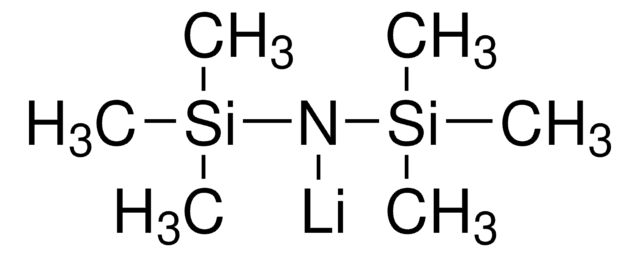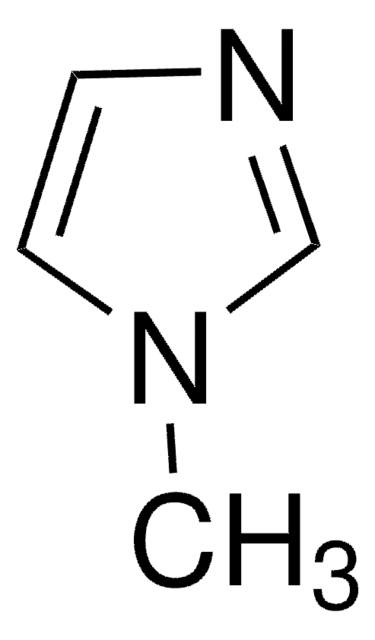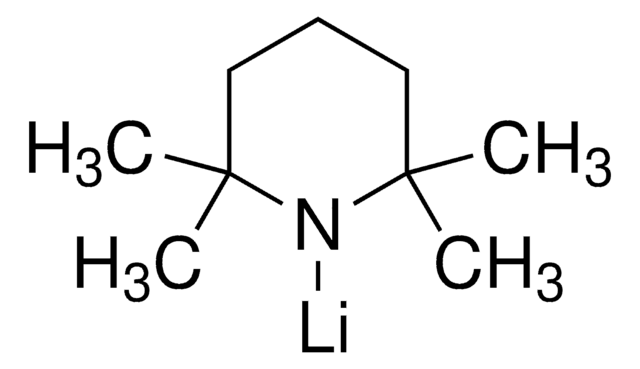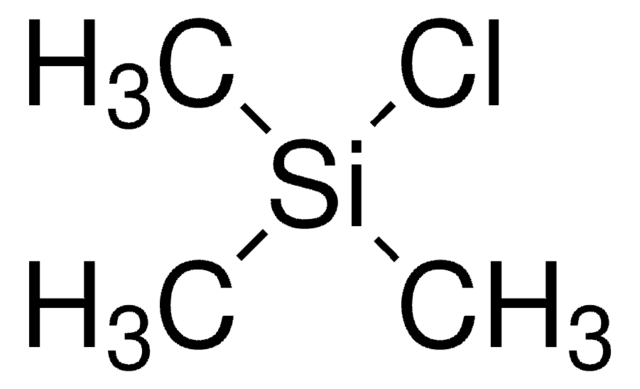Wichtige Dokumente
224367
Lithium-bis-(trimethylsilyl)-amid -Lösung
1.0 M in hexanes
Synonym(e):
Hexamethyldisilazan Lithiumsalz
About This Item
Empfohlene Produkte
Form
liquid
Qualitätsniveau
Konzentration
1.0 M in hexanes
bp
55-56 °C
Dichte
0.707 g/mL at 25 °C
SMILES String
[Li]N([Si](C)(C)C)[Si](C)(C)C
InChI
1S/C6H18NSi2.Li/c1-8(2,3)7-9(4,5)6;/h1-6H3;/q-1;+1
InChIKey
YNESATAKKCNGOF-UHFFFAOYSA-N
Suchen Sie nach ähnlichen Produkten? Aufrufen Leitfaden zum Produktvergleich
Anwendung
Verpackung
Signalwort
Danger
Gefahreneinstufungen
Aquatic Chronic 2 - Asp. Tox. 1 - Eye Dam. 1 - Flam. Liq. 2 - Repr. 2 - Self-heat. 1 - Skin Corr. 1B - STOT RE 2 Inhalation - STOT SE 3
Zielorgane
Central nervous system, Nervous system
Zusätzliche Gefahrenhinweise
Lagerklassenschlüssel
4.2 - Pyrophoric and self-heating hazardous materials
WGK
WGK 3
Flammpunkt (°F)
-23.8 °F - closed cup
Flammpunkt (°C)
-31 °C - closed cup
Persönliche Schutzausrüstung
Faceshields, Gloves, Goggles
Hier finden Sie alle aktuellen Versionen:
Besitzen Sie dieses Produkt bereits?
In der Dokumentenbibliothek finden Sie die Dokumentation zu den Produkten, die Sie kürzlich erworben haben.
Kunden haben sich ebenfalls angesehen
Unser Team von Wissenschaftlern verfügt über Erfahrung in allen Forschungsbereichen einschließlich Life Science, Materialwissenschaften, chemischer Synthese, Chromatographie, Analytik und vielen mehr..
Setzen Sie sich mit dem technischen Dienst in Verbindung.


![1,8-Diazabicyclo[5.4.0]undec-7-en (1,5-5) 98%](/deepweb/assets/sigmaaldrich/product/structures/120/564/5b373e23-1624-489c-8efb-692de0f96ffb/640/5b373e23-1624-489c-8efb-692de0f96ffb.png)










